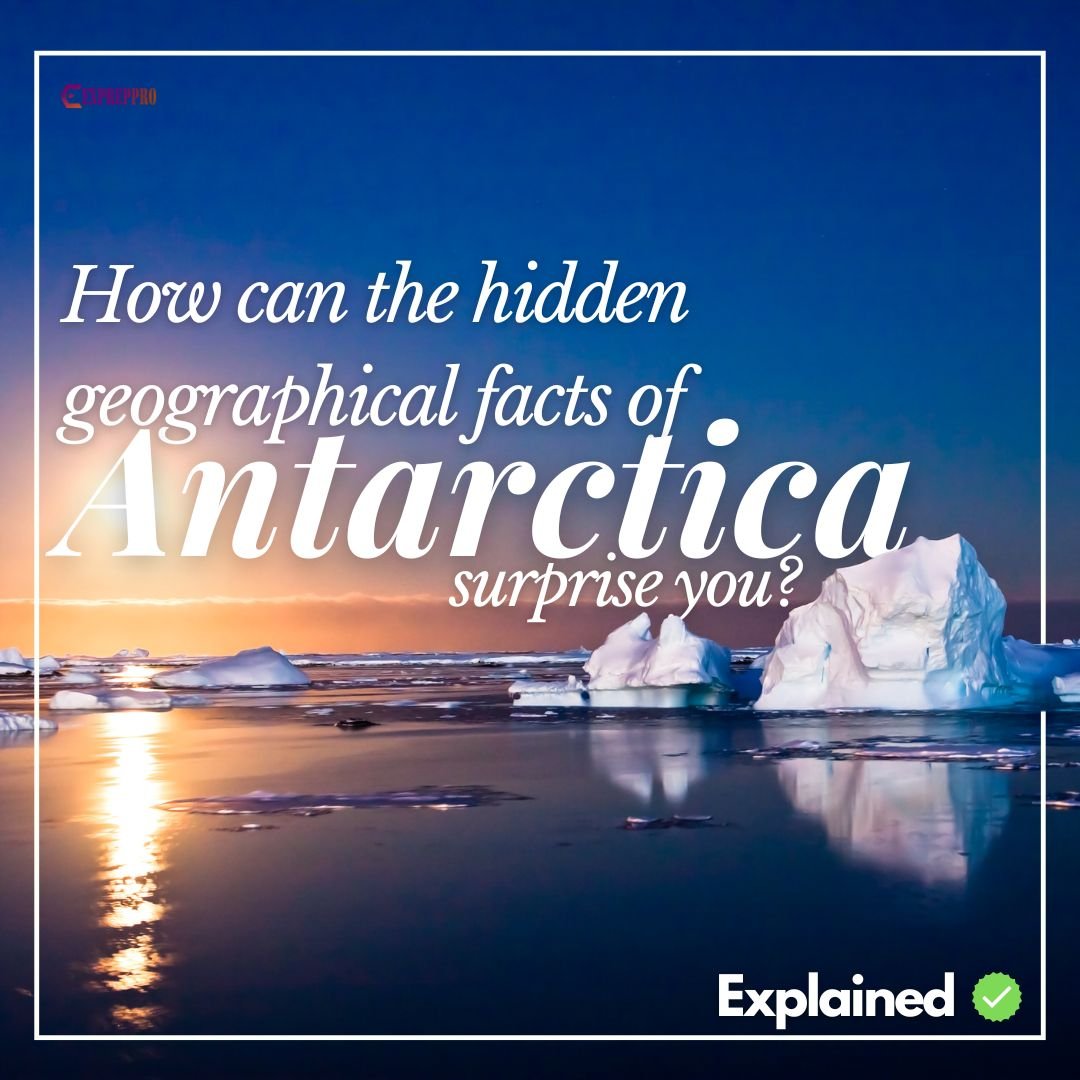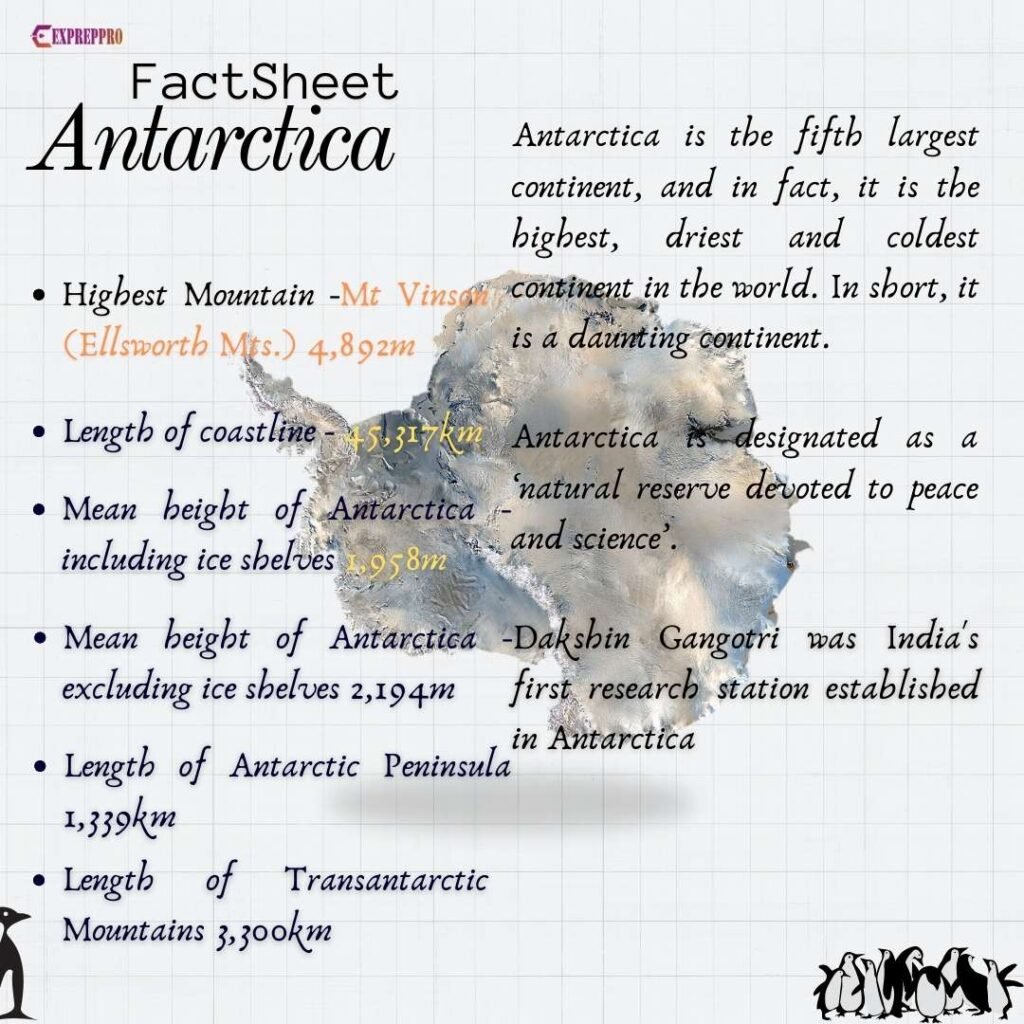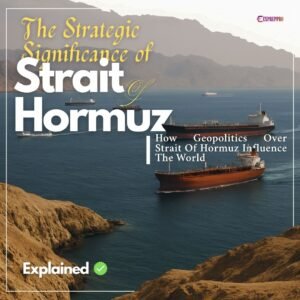
Antarctica is a place of is the first largest continent, and in fact, it is the highest, driest and coldest continent in the world. In short, it is a daunting continent. Antarctica is entirely surrounded by the Southern Ocean, which extends from the 40th parallel to the Antarctic Circle at 66° South.
Size Of Antarctica
The total land mass is approximately 14 million square kilometres, encompassing the geographical South Pole and its surrounding areas. Approximately 98 to 99 per cent of the area is covered by a 2000 to 4000-meter-thick ice sheet, with an average thickness of around 2100 meters.
Interestingly, if we compare the shape of Antarctica, it resembles an upturned saucer, rising steeply from the coast to an extensive interior plateau.

Main Geographical Regions of Antarctica
Researchers divide the continent of Antarctica into two main geographical regions.
- East Antarctica
- West Antarctica
The Ross and Weddell Seas, the Ross and Filchner ice shelves, and the Transantarctic Mountains divide both.
East Antarctica
East Antarctica is an older region than its younger western counterpart, which displays similarities with adjacent neighbouring continents, such as Australia and South America. Geologically, it is a remnant of the Gondwana supercontinent, which was formerly attached to Australia, from which it split during the mid-Tertiary period.
The lowlands, a peculiarity of East Antarctica, are interrupted by highlands of subglacial origin called the Gamburtsev Mountains.
West Antarctica
West Antarctica consists of two units: the mountains of Marie Byrd land and the Antarctic peninsula. The west portion is a southern continuation of the Andes Mountains. South of West Antarctica, the rocks disappear almost entirely under the ice cap. However, this province includes the continent’s highest and most spectacular range, the Sentinel Range, with the highest peak, Vinson Massif.
Lakes
More than 300 lakes sleep below the thick ice sheets of this icy continent. The largest lake in the Antarctic continent is Lake Vostok. Lake Vostok lies in a depression near the Gamburtsev Mountains below the Russian Vostok Station on the East Antarctic Ice Sheet.
This lake is approximately 250 km long and 50 km wide, with an average depth of 344 meters.
Some lakes on this continent are connected by sub-ice channels, while others remain isolated.
Gamburtsev Mountains
It reaches up to only 600 meters beneath the surface of the thick ice sheet. But the highlands are about the same size as the Alps mountain. They are the eroded remains of an ancient mountain range.
Why Does Antarctica Have The Least Earthquakes or Seismic Activity?
This continent is known for its characteristic feature of low seismic activity. This continent is not crossed by or close to any plate boundaries. This advantage is responsible for its low seismic activity.
Technically, the whole continent lies in the middle of a large plate called the Antarctic plate. Moreover, this plate is surrounded by constructive, divergent plate boundaries that create new basaltic rocks at the edge of the plate.
A small exception also lies in the northern tip of this content. It is a small plate called a Drake plate. It is currently sinking due to small seismic activity resulting from subduction. Drake plate sinks beneath the south Shetland islands. It is the last remaining part of a larger plate that was sinking below the west of the Antarctica peninsula.
Volcanoes In Antarctica
Although it is usual to mention that Antarctica has low volcanic activity, Active volcanoes are present on this continent.
Deception Island has one of the two currently most active volcanoes in Antarctica. This island is located on a spreading ridge, similar to Iceland on the mid-Atlantic Ridge. The volcano erupted in 1967,1969, and 1970. The volcanic eruption of 1969 even destroyed a chilien base and damaged a British station. The 1970 explosion created new caters, and hot springs are present near the shore of Caldera.
Mt Erebus is the most active volcano in Antarctica. It is the southernmost active volcano in the world and the largest of four volcanic cones that form Ross Island.
The volcano produces an unusual volcanic rock called Kenyte or Anorthoclase Phonolite, a type of Feldspar mineral. Kenya is the only other place in the world where Kenyte is present (so the name is related to Mount Kenya).
It creates low-intensity sporadic eruptions. It is not situated on an active plate boundary, but it is the active volcano in a much larger volcanic province called the McMurdo Volcanic Province.
General Climatic Regions Of Antarctica
Antarctica is divided into four broad climatic regions. they are
- Interior Antarctic Plateau
- The Antarctic Plateau
- Antarctic Slope
- The Antarctic Coast
The interior Antarctic plateau is a region with little annual precipitation, light winds, little snowfall, and extremely low temperatures. The region receives more sunlight than the rest of Antarctica.
The Antarctic slope is a region characterised by strong Katabatic winds and Cyclones.
Antarctic coast is a region of East Antarctica, including the ice shelves. This region receives additional moisture from air masses that move at low levels compared to the central plateau region.
The Maritime Antarctica region is dominated by circumpolar cyclonic storms, and due to more daylight hours, this area receives more sunlight.
The temperature is higher due to the nearby presence of the sea. Air temperature may rise above freezing point during the summer period.
Why Is It So Cold In Antarctica?
The Antarctic is a place that experiences net radiation deficiency. This place receives less incoming solar radiation than it emits as outgoing long-wave radiation. This net radiation deficit results in cold temperatures.
In summer, the temperature will be just above 0 c near the coast to -30 c in the interior. In winter, it will be -15 c near the coast and -65 c in the interior. The warm air moving to the poles makes the temperature in this range and with this warm air mass. Antarctica would become colder with each passing year.
Another reason is the presence of elevated ice sheets with a maximum elevation of over 4000 meters.
In Antarctica, the sun sets in March, and temperature quickly drops in early winter and remains constant for 4 to 5 months. Then the temperature will rise again in spring. This was known as Coreless Winter.
Why is it so windy in Antarctica?
The ice present at the surface cools the air with the radiative cooling. This cool air moves horizontally and becomes warmer as it rises.
The horizontal temperature contrast creates a density contrast, with dense air adjacent to the ice sheet and less dense air further from the ice sheet. The dense air sinks, resulting in Katabatic Wind.
Katabatic winds are characteristic of this icy continent. Katabatic winds flow straight downhill, but due to the Earth’s rotation, they turn to the left direction. The speed of the wind increases with a decrease in temperature and with an increase in terrain slope.
Sometimes, the combination of steep topography and cold, dense air which engenders Katabatic winds can also cause barrier winds to develop. A barrier wind occurs when cold, dense air blows towards a mountain range or a barrier.
The persistent easterly wind eventually encounters a barrier, gets slowed and is eventually blocked by terrain, increasing the air pressure near the mountain base. This increase in pressure results in flow away from the barrier. Due to rotation, the wind directly turns to the left, eventually turning parallel to the terrain and becoming a Southerly wind.
It is common on the eastern side of the Antarctic Peninsula and the East side of the Transantarctic mountains.
Minerals In Antarctica
East Antarctica is known to have deposits of Iron, Titanium, Uranium, Niobium, Tantalum, and a wide range of industrial minerals, including Graphite, Fluorite, and rock crystals, as well as Coal.
The Transantarctic Mountains are known to have small deposits of Tin and rare earth minerals, as well as Copper, Zinc, Molybdenum, and large quantities of Coal.
West Antarctica is known to have deposits of copper, Lead, Zinc, Silver, Iron, Chromium, Nickel, and Cobalt.



